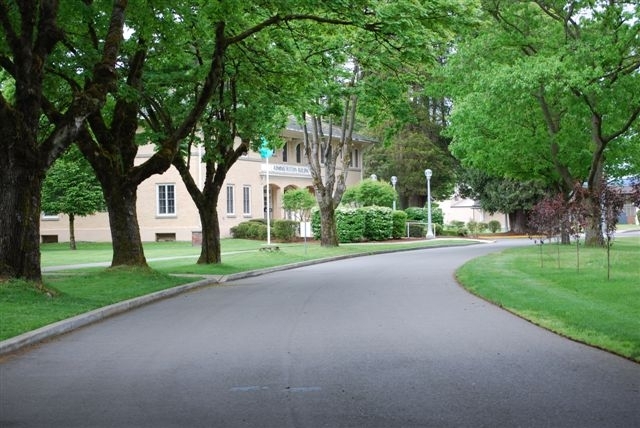Quick links:
The Behavioral Health and Treatment Center at Maple Lane Campus are DSHS’ first facilities created to treat patients in the community and in smaller facilities that better meet their needs. Since 2016, behavioral health and treatment centers on the Maple Lane Campus have provided treatment for a variety of residents in need of mental health treatment.

Campus and Units
The Maple Lane Campus first opened in 1914 as a training school for girls. the Washington State School for Girls. For nearly 100 years, it has served various populations under the Department of Corrections. It is currently being transitioned to a facility operated by Department of Social and Health Services serving adult psychiatric residents.
Cascade Unit, the first DSHS-operated Behavioral Health and Treatment Center on the Maple Lane Campus, opened in April 2016, serving up to 30 residents in need of competency restoration. In July 2024, the unit reopened to serve residents found not guilty by reason of insanity.
Oak Unit opened in April 2023 to serve up to 16 residents under civil commitment.
Columbia Unit opened in February 2024, and serves up to 30 residents found not guilty by reason of insanity.
Residents
Behavioral Health and Treatment Centers on the Maple Lane Campus provide treatment for two resident populations:
NGRI - people in need of inpatient psychiatric care who have been found not guilty by reason of insanity and have made substantial progress in their treatment.
Civil – people who received an involuntary commitment order by the court, either through a civil commitment proceeding under RCW 71.05, or a criminal justice proceeding under RCW 10.77.
Maple Lane Campus residents remain in a secure setting. We provide services and activities that are respectful to people across all cultures and backgrounds. These services include:
- initial intake and evaluation,
- medical screening, psychiatric screening, risk screening,
- psychological/biological/social evaluation,
- treatment and peer support.
The goal is to stabilize the illness and improve the person’s mental status and behavior. We want them to recover and be able to return to their home or another, less-restrictive living arrangement with appropriate integration into aftercare services.
All residents receive thorough discharge plans that are individualized with the support needed to meet their needs in the community. These include wraparound supports like medication management, case management, and medical care. Discharged residents are given a warm handoff to their next location, including transportation to their next residence from DSHS.
Our goal is for the Maple Lane Campus to become a part of the community as a resource and a partner.
Security
Entrances and exits are controlled by staff. The outdoor spaces for the residents are enclosed by fencing. The facility also has agreements with local law enforcement to assist as needed. Staff are trained in de-escalation strategies and emergency management processes to minimize calls to law enforcement and the fire department.
Every unit with the exception of Oak is located behind fencing and a secured gate. No one is able to enter Maple Lane Campus without authorization.
No services are provided for people who are not living at the facility. Maple Lane is a closed campus with no public restrooms, shelter services, or behavioral health services that can be accessed by the public. This is a controlled secure environment with a specific population serving people committed or adjudicated to DSHS’s care and custody to provide inpatient treatment. Visitors are limited to friends and family and visits must be scheduled.
Any planned trips off-campus by residents include staff members as escorts. Offsite trips might consist of trips to the local hospital, medical appointments, or housing appointments. Residents may also participate in trips that are treatment or recovery focused, such as sober supports in the community, or activities that are recreational and help with community reintegration, such as shopping, restaurants, getting familiar with public transportation, outdoors activities, and various community errands. The goal of these trips is to prepare residents to transition back into their community following their treatment.
